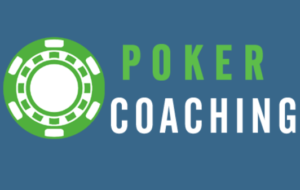







Fold Pocket Aces on the Flop?by Jonathan Little | Published: Jan 07, '19 |
 Somewhat deep in a $1,500 buy-in event at 1,200/2,400 blinds, our Hero raised to 6,500 out of his 105,000 effective stack from first position with Ac-Ad. Only the reasonably competent players in second and third position called. The flop came 9c-7s-3d. Hero bet 12,000 into the 23,100 pot.
Somewhat deep in a $1,500 buy-in event at 1,200/2,400 blinds, our Hero raised to 6,500 out of his 105,000 effective stack from first position with Ac-Ad. Only the reasonably competent players in second and third position called. The flop came 9c-7s-3d. Hero bet 12,000 into the 23,100 pot.
Up until this point, I think Hero has played his hand perfectly (although checking the flop is also an option). His preflop raise was sized in the way he would play his entire playable range and his flop bet was an innocuous 50% pot. It is important that you do not do anything out of the ordinary with any particular part of your range because that will often make it easy for your opponents to get reads on you. For example, if you normally raise to 6,500 with most of your hands but all of a sudden make it 12,500 with your premium hands, it will be obvious to your opponents that something is awry. Similarly, if you make a gigantic all-in or a minimum bet on the flop, alarm bells will also go off. So, instead of getting fancy (or losing your mind) simply play all your playable hands in the same manner.
The player in second position folded and then the player in third position raised to 30,000. Hero decided to push all-in.
It may not seem like it, but Hero is in a tough spot when faced with this flop raise. On such an uncoordinated board, some players only raise with premium made hands (two pair and better) and draws. In this situation, there aren’t many obvious draws besides T-8, which may or may not be in the opponent’s range (because many players fold T-8 preflop). Against the range of two pair and better made hands and the obvious T-8 open-ended straight draw, Hero’s A-A only wins 40% of the time. Even if Hero calls the flop raise and the turn does not complete the straight draw, he only wins 44% of the time.
While you may think these numbers mean that Hero should fold, they are essentially the worst-case scenario. In reality, many players raise uncoordinated flops with hands like overpairs and top pairs, hoping to price out various unpaired overcard hands. If you add only J-J, T-T, A-9s, and K-9s to the opponent’s range, Hero now wins 55% of the time on the flop, making a fold way too tight. As you add more and more hands to the opponent’s range, Hero’s chances of winning continue to improve (not to mention, the opponent could be bluffing). So, either Hero is getting his money in slightly behind when his opponent’s flop raising range is tight or decently ahead when his opponent’s raising range is wide. While it is difficult to know exactly which situation he is in this time, on average, continuing will be profitable for Hero.
Once Hero knows that he should continue, he has to decide if he should call the 30,000 raise or go all-in. If Hero thinks the opponent’s range is mostly value hands, he should go all-in to ensure the money gets in immediately before the board becomes scary such that the opponent can get off the hook with his worse made hands. If he thinks he is against a range containing some junky bluffs, he should call to allow the opponent to continue bluffing. As you can see, this may look like an incredibly standard all-in situation with pocket Aces but there is more going than initially meets the eye.
The opponent called with K-9, for an overplayed top pair. That is lucky!
 Thank you for taking the time to read this blog post. If you enjoyed it, please share it with your friends. If you want to continue working on your poker skills, be sure to sign up for your free 7-day trial to my interactive training site, PokerCoaching.com.
Thank you for taking the time to read this blog post. If you enjoyed it, please share it with your friends. If you want to continue working on your poker skills, be sure to sign up for your free 7-day trial to my interactive training site, PokerCoaching.com.
Be sure to check back next week for another educational blog post. Thanks for reading!